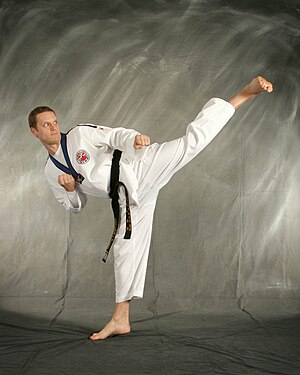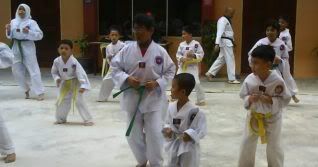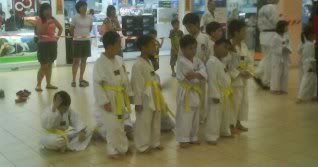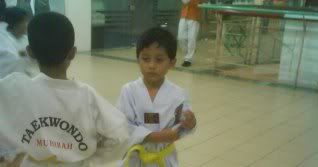On the same note, many believe that a black belt is the ultimate in martial art achievement. In reality, it is just another step in the learning process.
Taekwondo belt colors were only implemented after the martial arts developed.
There is even a myth behind the origin of the colored Taekwondo belts. Some say that originally, students would begin with a white belt, as is common today, but they are not given new colored belts.
Students were not permitted to wash their belts. And so as they trained, the belts would get darker and darker from perspiration and soon it would become black showing everyone how hard they worked.
The most popularly accepted one is that the Judo founder Professor Jigoro Kano, had implemented a belt system derived from a ranking system used in Japanese schools. The colors are a way of allowing an individual to see how they progress, step by step, and give them something to work hard towards.
When someone move up in the ranks, they begin to realize that it is not the belt they are striving for, but the knowledge which they have gained to achieve the belt.
Many martial arts have different belt rankings and some do not use belts at all.
The following descriptions of the belts are the meanings behind the colors and how they represent development in the student.
1. White.
 Image via Wikipedia
Image via WikipediaWhite is the traditional color of the Korean dobok. New students wear this as their first belt.
This color represents honor, purity, virtue, and innocence. White signifies innocence as that of a beginning student who has no previous knowledge of taekwondo.
2. Yellow.
Yellow is the second belt color of taekwondo. It is the color of honor, wealth, royalty and well-being.
Yellow signifies the Earth from which a plant sprouts and takes root as the Tae Kwon Do foundation is being laid.
3. Green.
Green is the third belt color in martial arts. The first of the intermediate colors, it is here that practitioners will realize how much there is to learn and how far there is to go.
Green signifies the plant's growth as taekwondo skill begins to develop.
4. Blue.
Blue is the fourth belt color.
Blue denotes authority, truth, loyalty, and mystery. It also symbolizes quality.
To wear a blue belt is to start to learn the vast history, philosophy and mysteries of taekwondo.
Blue signifies the Heaven, towards which the plant matures into a towering tree as training in taekwondo progresses.
5. Red.
Red is the last color belt before black belt.
Red evokes excitement, anger, and intensity. Red orders attention. There is great joy and passion in red.
It signifies danger, teaches the student to exercise control and warning the opponent to stay away.
6. Black.
Black is the color most people link with martial arts.
To a non-martial artist, to have a black belt is to have mastered the art.
To a student, it symbolizes just beginning true learning of the art.
Black is the color of wisdom, silence and eternity. To have a black belt is to have the sum of all knowledge from prior belt levels, and to move on to new levels.
Black is the opposite of white, therefore, signifying the maturity and proficiency in taekwondo. It also indicates the wearer's immunity to darkness and fear.













